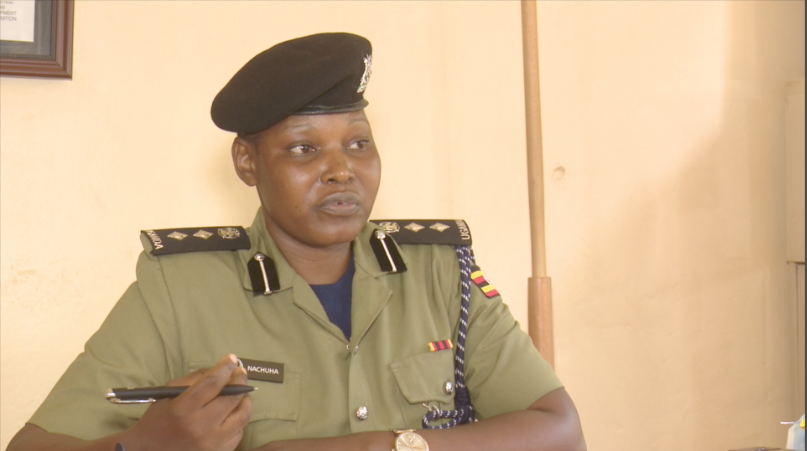The A to Z of Tanzania’s fuel tanker tragedy

What you need to know:
As it is always the case in such incidents in Tanzania, people rushed close to the tanker to siphon fuel that was spilling over—not knowing that the nation would later be sent into mourning.
Dar es Salaam. It was at around 8:30 a.m. on Saturday August 10 when hell-broke loose in the busy town of Morogoro; about 200 metres from the municipality’s major Bus Station, Msamvu.
Some residents of Morogoro town were seen pouring sand on their peers who had caught fire. It was a scene of horror!
A fuel tanker, loaded with petrol and diesel heading from Dar es Salaam to Mafinga in Iringa Region, had overturned as it tried to avoid hitting a motorcyclist, before it hit a tree and later plunging into a busy street.
As it is always the case in such incidents in Tanzania, people rushed close to the tanker to siphon fuel that was spilling over—not knowing that the nation would later sent into mourning.
Before the fire broke out—and perhaps when people were blissfully siphoning the fuel, videos shot by amateurs show the moments when women, men and young children were carrying buckets and jerry cans towards the tanker.
Some are seen tapping the spilling fuel from the trenches and on the ground. Some eyewitnesses say the spillage made some sort of a circle, in which people were entangled as they passionately collected the spilling fuel.
“I think this is why most people died,’’ says a man identified as Mr Joram who witnessed the incident in which over 64 people have died and 70 overs seriously injured.
“What happened is, people went into this circle and when fire broke out, they couldn’t escape easily. I think that’s why we have many who have died,” he said.
“The fuel actually spilled over into some homesteads. And when there was fire, it appears that the small kitchens around those homesteads made the fire spread to a wider area,’’ he said.
In less than one hour, the fire brigade arrived and began putting off the fire. Soldiers from the Tanzania People’s Defense Forces thronged the area to carry out a rescue operation.
Then, when the fire was completely put out, images of the aftermath showed the area around the tanker littered with charred corpses and the burned-out wreckage of motorbikes.
The most affected, according to Morogoro Regional Police Commander, Mr Wilbrod Mutafungwa, are motorcyclists or known as “Bodaboda” who were close and those who went to siphon the fuel.
Most of the victims were taken to Morogoro Regional Hospital and the bodies were preserved at the hospitals’ mortuary.
How the fire started
It has remained unclear exactly what triggered the fire. However, according to a bodaboda rider who was on the scene, a man struggling to rescue the driver opened covers that protect fuel tankers and abruptly the fuel spilled to nearby areas where food vendors had lit fire in the morning.
Other witnesses say one person was trying to steal the lorry’s battery and it created sparks, leading to a fire explosion.
Within a few minutes, a large number of people were already engulfed in flames with bodies being burnt beyond recognition.
Another eyewitness said a man who was among those scrambling for fuel was smoking a cigarette and happened to throw a piece into the fuel.
Government statements
President John Pombe Magufuli, now preparing to host the Southern African Development Community (Sadc) Summit, is among those shocked by the tragedy.
Ms Jenista Mhagama the minister of State in the Prime Minister’s Office responsible for Policy, Parliamentary Affairs, Labour, Employment, Youth and the Disabled said the government would take care of those affected in the accident.
She said a team of chemists had gone to Morogoro and would take DNA samples so that people can identify their relatives.
For his part, Mr Isack Kamwele, the Minister for Works, Transport and Communication said a team of specialist doctors from Muhimbili National Hospital and Benjamin Mkapa Hospital have already arrived in Morogoro for provide specialized treatment.
Speaking at Msamvu, Morogoro Regional Commissioner Dr Stephen Kebwe it is the first time such a tragedy has happened in the region.
He said the fire was contained and did not spread any other further. “Electricity was cut off and a lot of work has been done to ensure the fire could not bring another impact,’’ said Dr Kebwe.
Previous cases in Tanzania
Before this latest incident, the worst calamity was the one in Mbeya in 2002 in which 40 people died and 100 injured when an oil tanker overturned.
Mbeya region had also witnessed a number of similar road mishaps including collisions between the oil tankers and other vehicles.
But Morogoro remains the scene of another heart rending tragedies. In April 2015, 18 people perished when a tanker collided with a bus.
Common incidents in the region...
Incidents of people being killed in explosions while taking fuel from incapacitated tankers are common in East Africa.
Road tragedies involving the tankers are also common in much of Africa, especially the oil rich Nigeria.
However, the worst recorded ones were recorded in South Sudan and Kenya where over 150 and 130 people perished in 2015 and 2009 respectively
The sight is common along the regions’ highways and for a good reason; opportunity for the road side hangers-on.
Poverty is widespread in some of the small towns and rural areas that such tankers pass through, meaning people will often attempt to gather free fuel from damaged vehicles, Webb said.
Additional Reporting by Gadiosa Lamtey.



